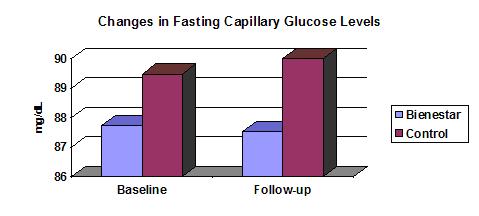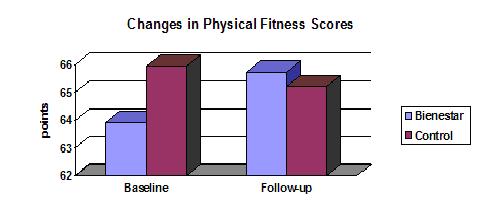Program Synopsis
Designed to improve dietary habits and increase physical activity among Mexican American elementary school students, this culturally tailored school-based diabetes prevention intervention consists of health and physical education classes, an after-school health club, family activities, and a food service component. The study showed an increase in the consumption of dietary fiber, decrease in fasting capillary glucose levels, and increase in physical fitness.
Program Highlights
Program Materials
Preview and order the materials from the developer
Program Scores
The Need
Mexican Americans have a greater prevalence of diagnosed and undiagnosed diabetes mellitus than African Americans and non-Hispanic Whites. Mexican American children are at increased risk for type 2 diabetes mellitus because they have more fat stored in the central portion of the body, a higher body mass index, and lower physical activity levels than other U.S. children. In addition, Mexican American children consume more dietary fat and fewer portions of fruits and vegetables than are recommended by national standards. Because lifestyle changes are more likely to sustain from an early age than are interventions in adulthood, culturally relevant programs that use multiple systems of delivery are needed to help reduce these risk factors in Mexican American children.
The Program
Bienestar Health Program is a culturally tailored school-based diabetes mellitus prevention program for low-income Mexican American children. There are four components to Bienestar: 1) health and physical education classes, 2) an after-school health club, 3) family activities, and 4) a food service component. The 13 health classes cover nutrition, physical activity, self-esteem, self-control, and diabetes mellitus. The physical education curriculum promotes an active lifestyle through 32 different activities. The after-school health club includes 26 sessions that reinforce classroom learning and promote leisure-time physical activity. Four parent activities allow for cooking demonstrations, salsa dancing, and nutrition and exercise related games. The food service component is designed to improve the nutrition knowledge of the food service staff and to persuade students to eat less fat and more fruits and vegetables during lunch.
Community Preventive Services Task Force Finding
 This program uses an intervention approach recommended by the Community Preventive Services Task Force: enhanced school-based physical education interventions (Physical Activity). This program also uses the following intervention approach for which the Community Preventive Services Task Force finds insufficient evidence: school-based programs promoting nutrition and physical activity (Diet and Nutrition). Insufficient evidence means the available studies do not provide sufficient evidence to determine if the intervention is or is not effective. This does not mean that the intervention does not work. It means that additional research is needed to determine whether the intervention is effective.
This program uses an intervention approach recommended by the Community Preventive Services Task Force: enhanced school-based physical education interventions (Physical Activity). This program also uses the following intervention approach for which the Community Preventive Services Task Force finds insufficient evidence: school-based programs promoting nutrition and physical activity (Diet and Nutrition). Insufficient evidence means the available studies do not provide sufficient evidence to determine if the intervention is or is not effective. This does not mean that the intervention does not work. It means that additional research is needed to determine whether the intervention is effective.Time Required
The Bienestar Health Program is delivered over 7 months during the school year. Health and physical education classes are held five days per week and are 45 minutes long. One day per week is a health education class, the other four days are devoted to physical activities. After-school health club meetings are held weekly and are one hour in length. Parent meetings are held every other month and last approximately one hour. The food service program is delivered once per month and each lesson is 30 minutes long. There is also a one-hour on-site training available for school staff.
Intended Audience
Participants who tested this program were fourth grade students from inner-city neighborhoods in San Antonio, TX; 82.5% were Mexican American; 7.0% were African American; 5.5% were Asian; and 5.0% were White (not of Hispanic origin). 94% were economically disadvantaged. This program is applicable to diverse populations.
Suitable Settings
The intervention is suitable for implementation in the school, home, and after school care programs.
Required Resources
The Bienestar curricula are from kindergarten to fifth grade level. The curricula materials include: Bienestar Physical Education Activities Guide, Cafeteria Program Teacher's Guide, Bienestar Family Times Take-Home Activity Program, and the Health Curriculum Teacher's Guide (includes student handbook). Costs associated with program implementation are not provided.
About the Study
Twenty-seven elementary schools were randomized to the Bienestar Health Program or to the control group. All students attending Bienestar schools received the intervention, however outcome data were collected only for children with completed consent (N = 1,419). Bienestar was delivered over seven months and included health and physical activity classes, after-school sessions, parent activities, and a food service program to increase fruit and vegetable consumption and decrease fatty food consumption at lunch. Surveys measured fasting capillary glucose levels, body fat, physical fitness scores, dietary fiber intake, and energy from saturated fat at baseline and immediately following intervention delivery.
Results indicated:
- No statistically significant differences in body fat or energy intake from saturated fat (%).
- Bienestar students had decreased fasting capillary glucose levels (-0.20 mg/dL) and students in the control schools had increased levels (+0.52 mg/dL).

- Bienestar students increased their physical fitness scores by 1.81 points, whereas control students decreased their fitness scores by -0.73 points.

- Bienestar students consumed more dietary fiber than their control counterparts. Bienestar students increased their level of dietary fiber consumption by 0.38 grams while the control group decreased its level by -0.15 grams of dietary fiber.

Publications
Trevino RP, Hernandez AE, Yin Z, Garcia OA, Hernandez I. (2005). Effect of the Bienestar Health Program on Physical Fitness in Low-Income Mexican American Children. Hispanic Health Care International, 27 (1), 120-132.


